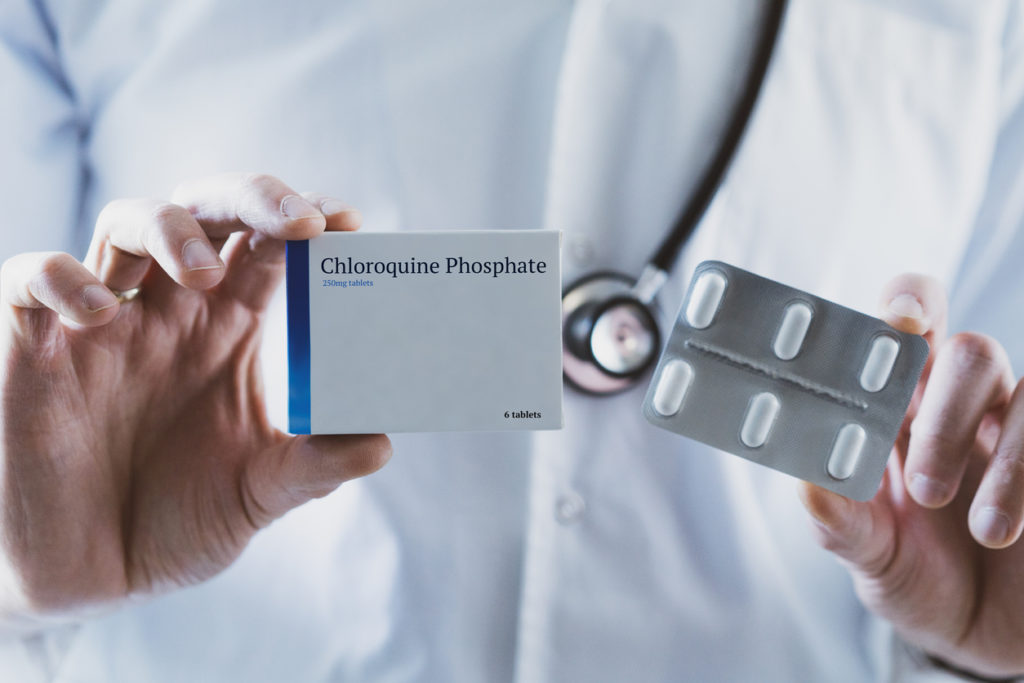Evidence continues to mount against hydroxychloroquine, the antimalarial drug that showed early promise against COVID-19 in in-vitro work. On Tuesday, a medical records analysis from US Veterans Health Administration hospitals concluded hydroxychloroquine use was associated with a higher risk of death in COVID-19 patients. The NIAID panels formulating guidelines for COVID-19 treatment reacted to this and other recent results by formally recommending against the use of hydroxychloroquine with azithromycin in treating COVID-19.
This news comes after a randomized controlled trial in China failed to show effectiveness and another in Brazil was halted for safety reasons. In response, several major hospitals around the world had already stopped using hydroxychloroquine in recent weeks.
VHA hospital records reveal possible dangers
The evidence released on Tuesday came from real-world analysis of VHA hospital health records across the United States. Researchers compared the fatality rates of COVID-19 patients treated with hydroxychloroquine, with or without azithromycin, to the fatality rates of those treated with supportive care alone. They found that those treated with hydroxychloroquine were at significantly higher risk of death.
In the VHA hospitals, 27.8% of those treated with hydroxychloroquine died, compared to 22.1% of those treated with hydroxychloroquine and azithromycin. That’s more than double the fatality rate of people treated with supportive care alone. Only 11.4% in this treatment category died.
It’s true that the VHA numbers don’t come from a randomized trial, and the numbers don’t prove causality. But in this analysis, the comparative group came from the same hospitals as the hydroxychloroquine group, and appear well matched for case severity. Patients from both groups required ventilation at the same rate.
The more this body of evidence grows, the more likely it becomes that in addition to being ineffective, hydroxychloroquine may be introducing side effects that make things worse.
Where hydroxychloroquine went wrong
Before all of this, there was reason to hope for hydroxychloroquine in COVID-19 treatment. We reported early on that chloroquine and related drugs (though not quinine) showed significant efficacy against COVID-19. That research was based on in-vitro systems. A nonspecific mechanism involving the chemistry of the cell membrane is probably what made the results look good.
Early case reports were encouraging, and an early non-randomized trial from France showed great results. Antimalarials like hydroxychloroquine were exciting because we could already produce them so cheaply and in such large quantities. If they worked, they could be put to use quickly and treat millions of patients around the world. Even in a very large COVID-19 outbreak could be controlled if effective antimalarials worked.
Soon after these initial studies, though, comments began to cast doubt on the research methods. Then, other similar trials failed to show the same results. Still, desperate governments around the world issued emergency use authorizations, major hospitals began using it, and some medical bodies even incorporated it into drafted standards of care.
Now, we have access to higher quality results from hydroxychloroquine studies. And the new evidence is frightening. Not only could hydroxychloroquine be ineffective, but it could actually be contributing to COVID-19 patient deaths.
Furthering evidence from randomized trials
The new VHA numbers add a disturbing dimension to our conclusions about hydroxychloroquine, but the ideas build on the findings of randomized trials. That both strengthens the findings and makes them more frightening–it means there’s something to the idea that hydroxychloroquine could kill patients.
Here’s what we knew even before Tuesday. First, a randomized controlled trial from Shanghai was unable to show that hydroxychloroquine had a statistically significant effect on recovery time, symptoms, or fatality rates. Researchers did see a trend in C-reactive protein concentrations, which could mean the drug helped reduce inflammation, but the trend wasn’t significant. In other words, the drug didn’t seem to make anything better in COVID-19 patients.
That trial was a bust.
Major researchers including the University of Michigan and institutes in France and Sweden reported that they’d stopped using hydroxychloroquine due to lack of efficacy and significant side effects. In addition, a trial in Brazil was halted prematurely due to toxicity and lack of efficacy.
Now, we have the VHA numbers.
While it’s theoretically possible that this drug has some kind of subtle effect that all these studies couldn’t detect, that’s unlikely. The weight of evidence now indicates pretty clearly that hydroxychloroquine is not the highly effective drug that we initially hoped, and it probably doesn’t work at all.
Hydroxychloroquine will not suddenly clear overcrowded hospitals by discharging all the patients, and will not dramatically lower the CFR of COVID-19. In fact, it may be flat-out killing patients.
The NIH has already reacted by recommending against the use of hydroxychloroquine with azithromycin for COVID-19 patients due to QTc prolongation, but has not yet recommended against hydroxychloroquine or chloroquine without azithromycin.
Hope for remdesivir
By contrast, very preliminary results of trials on remdesivir indicate it could be effective against COVID-19. Those results include a preliminary informal report from the University of Chicago about its experience with 152 patients in Gilead’s large multicenter non-randomized trial. NIAID has also led a successful randomized trial in monkeys.
However, Gilead’s latest report on its ability to scale production of remdesivir shows the importance of flattening the curve. Gilead estimates it can produce no more than 140,000 courses of remdesivir in the next six weeks. Gilead might be able to come up with a million by the end of the year and “several million” next year.
The search for effective therapies for serious cases of COVID-19 is advancing, but so far without a highly effective drug, particularly one available in large quantities.


You are reporting the comment """ by on